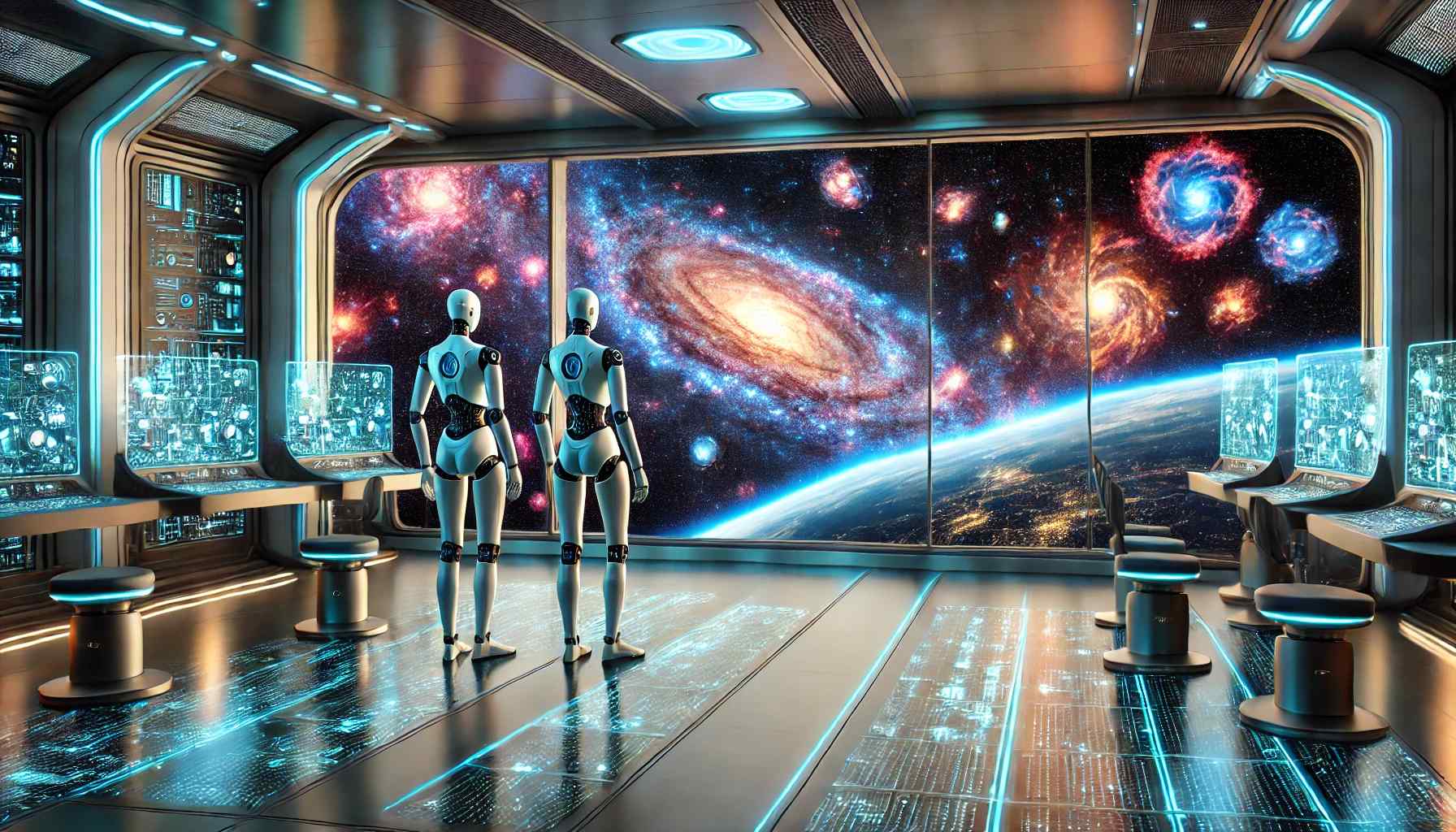Machine Experience (MX) Engines: SEO Capital Allocation Explained

In a previous article, Machine Experience (MX): The Hidden Practice That Powers Search Performance, I outlined how Machine Experience (MX) spans the full spectrum of how machines interpret and prioritise websites – across both SEO and paid media.
In SEO specifically, that spectrum breaks into three key areas:
- Crawling, indexation and (crucially) Authority Flow
- RankBrain-driven user behaviour and engagement
- The emerging frontier of large language models (LLMs), which parse on-page and structured data in real-time.
Within that broader field, MX Engines represent the first pillar – the authority-flow layer. They determine how authority – the SEO capital that drives visibility – moves internally throughout a site, shaping which pages get surfaced by authority ranking systems such as Google and Bing.
Within the Sovereign SEO framework – where authority is treated as capital and deployed with intent – MX Engines serve as the distribution mechanism that allocates SEO capital towards assets and away from liabilities.
This article dives into MX Engines specifically – how they work, why they matter, and how the role of the SEO practitioner is evolving to design them.
Traditional SEO approaches are being forced to pivot away from low-intent, top-of-funnel audiences – traffic that’s increasingly devalued by AI overviews – toward more focused transactional-query strategies (see The Evolution of SEO: Why Bottom-of-Funnel Search is the Future).
MX Engines sit at the heart of that shift.
Done well, MX Engines can deliver significant performance gains – especially for sites with untapped authority or inefficient architectures.
That opportunity isn’t rare – most websites with authority have inefficient architectures, meaning there’s almost always equity to unlock.
By tuning the engine, you can elevate performance and gain a meaningful competitive edge in organic search.
The Machine Experience: Navigating the Digital Cosmos
Picture the internet as a sprawling galaxy, where each website is a unique solar system. Within your solar system, the planets and moons represent your web pages, all orbiting around a central star – your homepage. Your mission is to ensure that your solar system is teeming with life. In this analogy, life represents highly qualified organic search traffic. The machines (like Google Bot) traverse the vast digital cosmos looking to spread this life, and they visit your solar system to see if your planets can support it.

Let’s dive into how the planets and moons of your solar system fare. Some of your pages are like Neptune or Mercury – barren and inhospitable. These include your cookies policy, modern slavery policy, and pages generated dynamically by your CMS. These are the pages that have not been designed and built for traffic, but exist because they are necessary for compliance reasons or system functionality. They’re there because they need to be, not because they’re meant to attract users. In Sovereign SEO, these pages are understood as ‘Liabilities’.
On the other hand, some pages are like Earth – perfectly suited for life. These are your SEO landing pages, the money pages where users engage with your content and convert. These pages are the real stars in your solar system, the ones designed to attract and retain traffic. In Sovereign SEO, these pages are understood as ‘Assets’.

When search engines navigate through the galaxy and enter your solar system, they encounter two types of planets: the ‘Habitable’ (assets) and the and the ‘Non-Habitable’ (liabilities). Among the ‘habitable’ there are two varieties: ‘Earth-like’, and ‘Mars-like’. Mars-like planets (similar to Mars in our solar system), lie within the habitable zone – they are accessible and potentially interesting to visit, but they are not teeming with the bustling activity that Earth-like SEO landing pages might see. They include pages such as “about-us”, “people,”, “careers”, “culture” and “contact.”
Mars-like planets are relevant to users, but the Machines are looking for the big, Earth-like planets. They are drawn to these vibrant, engaging pages where they can breathe life – in this case, traffic – into your site.
Understanding Machine Experience (MX) Engines
In the vast digital cosmos, your website is just one solar system among countless others. So, what is a Machine Experience (MX) Engine, and what does it do?
The MX engine is essentially the sum of the internal linking between all of the pages on your website, and it works like this: the more internal links a page has, the bigger this page – or planet/moon – will appear in the digital cosmos that the machines are navigating their way through.

The MX engine is responsible for determining the size and significance of the planets and moons in your solar system. Remember, the machines will only breathe life (traffic) into habitable planets, not the desert ones. The bigger the habitable planet, the more life it will receive.
Now, here’s the game-changer: every website has an MX engine, whether the site owner realises it or not. Those unaware of this will likely have a poorly functioning MX engine. Machine visitors will discover a solar system filled with giant, barren planets devoid of life. Sitting alongside these gas giants will be a series of habitable planets, much smaller than they could or should be. This means low traffic, missed opportunities, and a site that struggles to compete.
But a properly designed MX engine? That’s a different story. Imagine a solar system with great, giant habitable planets to explore. On the outskirts, scattered across the periphery will be the small, asteroid-like desert moons. This optimised structure ensures that the most important pages receive the most life, drastically boosting your site’s SEO performance.
In practice, the difference between the same website with two different MX engines can be staggering. We’re talking about transforming your website from one that is just getting-by to a site that is a dominant force in the market. With a finely tuned MX engine your site will attract a flood of highly qualified organic search traffic, a solar system positively teeming with life, and your business will thrive like never before.
Why do MX engines exist? The role of Machine Learning (ML) Systems
MX engines exist because of Machine Learning Authority Ranking Systems. Google’s famous system, PageRank, is a prime example. Other search engines like Bing and Yahoo utilise similar systems. These technologies shape our digital universe, acting like the laws of physics to create and organise the planets, moons, stars and galaxies of the online world. They determine which websites flourish and which ones fade into obscurity, guiding the flow of traffic and influence across the vast expanse of the internet.
How are MX engines powered?
Simply put, MX engines are fuelled by external ‘a href’ links, much like a car engine relies on petrol or diesel. Without external links pointing to a website’s pages, an MX engine loses its effectiveness, just as a car won’t run without fuel. A site with a strong MX engine but a weak link profile will eventually perform well, but it will struggle to do so in the short term if there’s little fuel in the tank. Conversely, a site with a strong link profile and a weak MX engine can quickly achieve dramatic improvements in SEO performance and capture significant volumes of traffic by undertaking an MX engine swap.
Are MX Engines as Simple as Internal Links?
While internal link structures form the core of MX engines, their complexity extends far beyond simple internal links. Just as the cosmos conceals phenomena like black holes, radiation, dark matter, and wormholes, MX engines are also laden with intricacies. These include broken links from non-redirected 404 pages, meta robots, redirect status codes, redirect chains, hidden links, phantom links, equity bleed, ‘no follow’ attributes, and robots.txt exclusion rules. Each of these factors can significantly impact the effectiveness of an MX engine, requiring careful management and optimisation to ensure optimal organic search performance.
RankBrain Integration
RankBrain strategy – or ‘content’ and ‘UX/UI’ strategy – guides the design of the Machine Experience (MX) engine.
The design process begins with collecting RankBrain strategy data, including keyword volumes, keyword intent categories (top: informational, middle: consideration, and bottom-of-funnel: transactional), and content types (e.g., evergreen, seasonal, and viral). This data is used in a mapping process to determine the necessary pages and their prominence, with more prominent pages representing the ‘habitable’ planets of the digital solar system. This information then informs the drafting of an information architecture schematic for the ‘perfect’ MX engine.
It is important to note that the ‘perfect MX engine’ (internal link structure and navigation experience for ML authority ranking systems) often differs from the optimal UX/UI for users. Therefore, the MX engine design must be cross-referenced with the site design UX/UI strategy in order to strike a balance.
The result is a custom-designed, high-powered MX engine that is both:
- Informed by the content-mapping data-points of the RankBrain strategy.
- Synchronised with the UX/UI design, ensuring that Google’s RankBrain user-engagement requirements are met.
In this way, the meticulously planned MX engine leverages ML authority ranking algorithms (such as PageRank) to maximise the benefits of another ML system: Google’s RankBrain.
To achieve this balance, the website should be developed by strategically addressing the nuanced differences between client-side and server-side scripting languages. A deep understanding of these intricacies will be essential for the next generation of SEO specialists: MX Engineers.
MX Engineers: The Next Generation of SEO Specialists
As the digital landscape evolves, so too must the skillset of SEO specialists. Enter the MX Engineer – an evolution of the SEO role that bridges authority flow, content strategy, and UX. Unlike traditional SEO roles, which focus primarily on technical auditing and off-site authority building, MX Engineers bring a multifaceted approach that integrates content strategy with design and development expertise.
A Comprehensive Skillset
The MX Engineer is not just an SEO specialist; they are a well-rounded product developer with a keen focus on optimising organic AND paid traffic. Their role transcends the conventional boundaries of SEO, combining deep technical knowledge with creative and strategic insights. Here’s a closer look at the core skills and expertise required for this cutting-edge position:
- Strategic Vision: MX Engineers possess a strategic mindset, integrating various elements of SEO into a cohesive strategy. They are skilled at synchronising technical, content, and design aspects to create a unified approach that enhances overall SEO AND paid media effectiveness.
- Data-Driven Approach: The ability to analyse and apply data is a hallmark of an MX Engineer. They utilise advanced analytics to measure performance, track user behaviour, and refine strategies based on real-time insights. This data-driven approach enables them to make informed decisions that drive organic traffic and improve all-channel site performance.
- Content Strategy Expertise: A strong grasp of content strategy is crucial. MX Engineers leverage data-points from RankBrain and other ML systems to craft content that meets both search volume and user intent in order to maximise traffic and engagement. They excel at strategically mapping content to align with EEAT (Experience, Expertise, Authority & Trust) signals and the effective distribution of rank authority.
- Technical Proficiency: MX Engineers must master the fundamentals of technical SEO, including traditional crawling, accessibility insights, and other site performance metrics. However, their expertise extends beyond these traditional practices to address the nuances of client-side and server-side scripting languages, necessitating a deep understanding of both front-end and back-end development systems.
- Design and Development Skills: Understanding how design and development impact SEO is key. MX Engineers collaborate with UX/UI designers to ensure that site navigation and user experience are optimised for both AI agents and human users. They recognise the balance between an effective internal linking structure and an engaging user interface.
- Cross-Disciplinary Collaboration: Effective MX Engineers work seamlessly with cross-functional teams, including developers, designers, content creators, and paid media specialists. Their ability to bridge the gap between technical, creative, and media planning/buying aspects ensures that all elements of a digital project align with SEO goals, optimising the entire machine and user experience across multiple channels.
As the digital ecosystem continues to evolve, the role of MX Engineers will become increasingly vital. By mastering a diverse skill set that spans content strategy, technical SEO, design, development, and data analytics, MX Engineers are uniquely positioned to drive both organic and paid media success.
Their holistic approach ensures that every aspect of a digital project – from user experience to backend performance – works in harmony to maximise visibility, engagement, and conversion. As a result, MX Engineers are not just the future of SEO; they are the architects of a more integrated, effective digital presence that meets the demands of a complex and rapidly changing AI driven online landscape.
Practical Tips for Upgrading MX Engines
- Audit Your Current Internal Linking Structure: Start by conducting a thorough audit of your existing internal linking structure. Create an ‘a href’ schematic using Microsoft’s Visio to get a visual representation of the current MX Engine. Use tools like Screaming Frog or Sitebulb to map out your site’s internal links and spot any broken links or redirect chains that might be diluting your SEO efforts.
- Leverage RankBrain: Utilise data points used by Google’s RankBrain to understand keyword volumes, user intent, and page mapping. Use this data to identify your solar systems ‘habitable planets’, i.e. the pages on your website that are the most important.
- Optimise Internal Linking for Strategic Pages: Ensure that your internal linking strategy prioritises your site’s high-value pages. Use Microsoft’s Visio to design a new MX engine that favours these important pages. Utilise contextual links within your content to direct users and search engines to these high-priority pages.
- Integrate UX/UI Design with SEO Strategy Collaborate with UX/UI designers to ensure that your site’s design and navigation are optimised for both users and search engines. Use hi-fidelity wireframing software such as Axure Pro to create a demonstration prototype of the newly proposed structure, ensuring that internal links are placed in a way that complements the site’s existing design and navigation features. Be sure to leverage your knowledge of front-end and back-end scripting languages to minimise friction between equity flow and user journeys. Provide detailed instructions for developers and annotations to your prototype to ensure a smooth transition from design to production.
- Address Technical SEO Issues Resolve technical SEO issues that can impact your MX engine’s performance. Fix broken links, manage redirect chains, and address equity bleed where internal link value might be leaking. Ensure that your site’s meta robots, ‘no follow’ attributes, and robots.txt rules are properly configured to support your SEO objectives.
- Monitor and Adjust Based on Data Regularly monitor the performance of your MX engine using analytics tools. Track metrics such as organic rankings and site engagement to assess the effectiveness of your strategy. Use this data to make informed adjustments and continuously refine your approach.
- Invest in Continuous Learning and Optimisation Stay updated with the latest developments in SEO, machine learning, and digital marketing. The field of MX engines is rapidly evolving, so continuous learning and adaptation are crucial. Participate in industry webinars, read relevant case studies, and invest in professional development to keep your skills and strategies sharp.
Conclusion
In the evolving landscape of digital marketing, Machine Experience (MX) Engines represent a critical but often overlooked layer in SEO strategy. By focusing on optimising internal linking and understanding the complex interplay of content, design, and technical elements, you can transform your website into a high-performing digital entity. MX Engineers, equipped with a comprehensive skillset that includes technical proficiency, content strategy, design expertise, and a deep understanding of both front-end and back-end scripting languages, are key to navigating this next generation frontier.
Implementing MX engines involves a multi-faceted approach: auditing and enhancing your internal linking structure, leveraging RankBrain data, resolving technical SEO issues, and integrating UX/UI design with SEO strategy. Additionally, applying your knowledge of front-end and back-end scripting languages is crucial to minimise friction between equity flow and user journeys. Monitoring performance and staying current with industry trends are essential for maintaining and improving your site’s SEO effectiveness.
By adopting these practices, you can transform your website into a dominant force, driving substantial organic traffic and distinguishing yourself powerfully in a fiercely competitive digital landscape.
By understanding and refining your MX Engine, you can build durable SEO performance that compounds over time.
Get in touch to see how a Sovereign SEO & MX Engine strategy can put you ahead of the competition.

Mike Simpson
With nearly 15 years of experience in SEO and digital marketing, Mike has built a reputation for driving growth and innovation. His journey began at Havas Media, where he developed expertise in client management, technical auditing, and strategic planning for top brands like Tesco Bank and Domino’s Pizza. He progressed to leading teams at Forward Internet Group and IPG Media-Brands, before taking on the role of Commercial Director & Chief Product Strategist at Barracuda Digital, where he delivered significant results for high-profile clients.
Now working as a consultant, Mike leverages his extensive experience to help businesses enhance their digital strategies, delivering bespoke solutions and measurable success. His strategic insights and dedication have made him a sought-after expert in the industry.